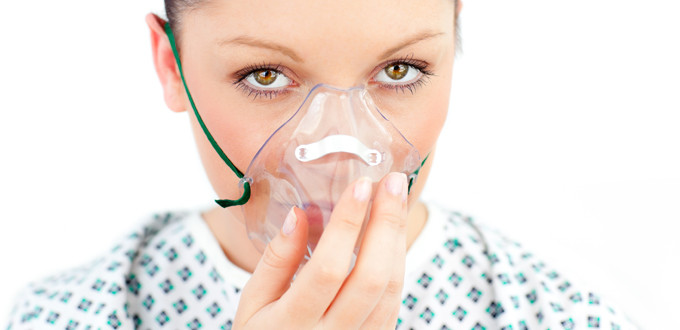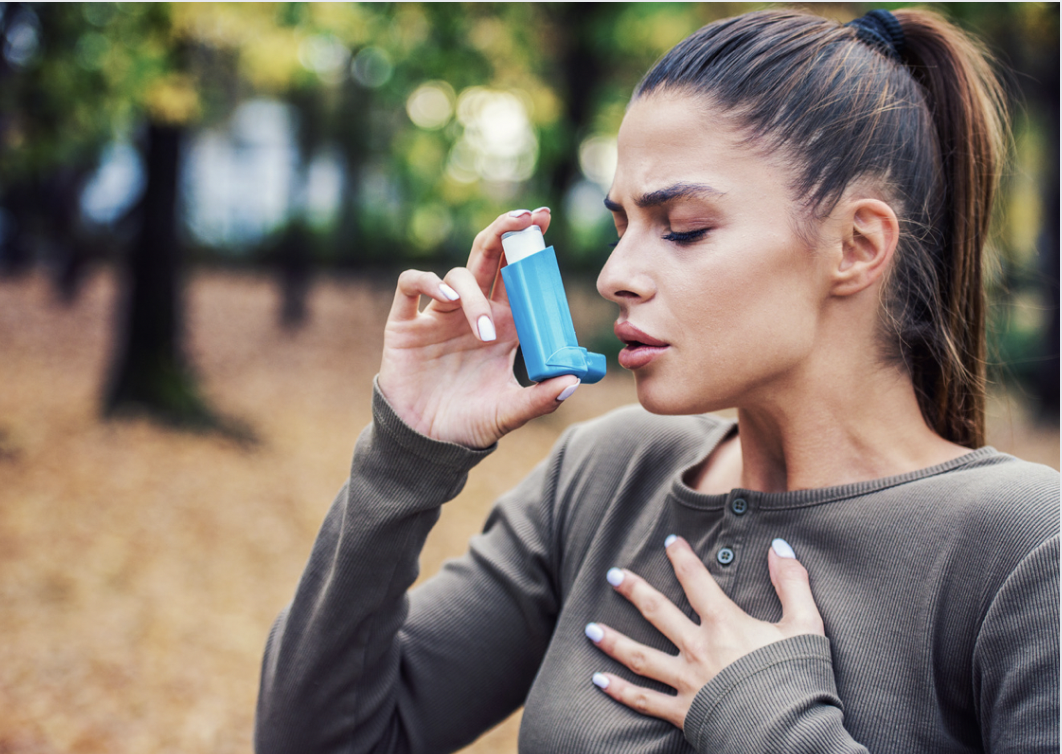Definition
Shortness of breath is a sensation that indicates discomfort or the presence of an abnormality in the breathing process. You may feel unable to get enough air into your lung organs. Breathing may require more effort, make it difficult to take deep breaths, or cause chest pain. In medical terminology, shortness of breath is known as "dyspnea."
Breathing is a fundamental process for human survival. When there is shortness of breath, something abnormal is happening in the distribution of oxygen throughout the body. Breathing is the easiest way to get oxygen into the body.
The degree of shortness of breath can vary, ranging from mild to moderate to severe shortness of breath with various causes. Shortness of breath is often a symptom of multiple medical conditions, many of which are associated with heart or lung disorders. In addition, shortness of breath can also be associated with other problems such as anxiety, severe allergic reactions, or anemia. Shortness of breath is one of the most common causes of emergency department (ED) visits.
Some types of shortness of breath will be briefly explained below:
- Acute shortness of breath
Acute shortness of breath is defined as shortness of breath that occurs unexpectedly and quickly, lasting only a few hours to a few days. Acute shortness of breath can be caused by anxiety disorders, illnesses such as the flu and the common cold, or more serious conditions such as heart attacks, blood clots (embolism), and severe allergic reactions.
- Chronic shortness of breath
Chronic shortness of breath is defined as shortness of breath that lasts for weeks or longer or occurs regularly. Conditions such as heart failure, asthma, and chronic obstructive pulmonary disease (COPD) can cause chronic breathlessness. A lack of exercise and physical activity can also leave you feeling out of breath all the time.
- Paroxysmal Nocturnal Dyspnea (PND)
PND is when a person experiences shortness of breath for 1-2 hours after falling asleep, which can wake them up. PND usually subsides when the person sits upright and is commonly one of the hallmarks of heart failure.
Read more articles about heart failure here.
Causes
Generally, you can feel out of breath under normal conditions, such as after strenuous exercise or hiking in the mountains or at high altitudes. The most common causes of shortness of breath are lung and heart-related disorders, although other medical conditions can also cause it.
The lungs and heart are the two organs that work together to carry oxygen in the blood around the body, so if there is a disturbance in the distribution of oxygen throughout the body, this can cause shortness of breath.
Shortness of breath can be caused by a variety of conditions, including:
- Acute heart failure
- Low blood pressure
- Respiratory infections such as COVID-19, pneumonia, or tuberculosis
- The presence of fluid in the lungs
- Pneumothorax is a condition where the lung collapses
- Tumor in the lung or airway
- Carbon monoxide poisoning
- Stress or anxiety
- Severe allergic reaction
- Worsening of asthma or COPD
- Choking on food or objects that block the airway
- Injury to the lung or sternum
Read more about Chronic Obstructive Pulmonary Disease (COPD here.
Risk factor
Risk factors for shortness of breath include the following:
- Advanced age
- Having heart or lung disease
- Being overweight or obese
- Smoking habit
- Having a history of allergies
- History of anxiety disorders and mental illness
- History of injury to the chest
- Working in a dusty environment or exposed to chemicals
- Sedentary lifestyle, or lack of movement and physical activity
Symptoms
Each person may experience a slightly different sensation of tightness or difficulty breathing. Shortness of breath complaints may accompany other symptoms, such as coughing or loss of consciousness. However, in general, shortness of breath can be described as follows:
- Tightness and discomfort in the chest
- Sensation of having to inhale deeply or exhale forcefully
- Breathing feels rapid and shallow
- Abnormal sounds when inhaling or exhaling, such as wheezing
- A conscious and irresistible urge to breathe
Diagnosis
Shortness of breath is a symptom of a specific disease, so a doctor will conduct a thorough patient examination to determine the cause. As with other diseases, the doctor will perform a medical interview, a physical exam, and a supportive examination to treat the shortness of breath and its cause properly. However, if the patient is experiencing tightness and is in serious condition, the doctor will immediately prioritize a physical examination and begin treatment to relieve the tightness.
The medical interview is the process by which the doctor gathers information from the patient. The information that the doctor usually asks for is:
- The patient's primary complaint
- How long has the complaint been present
- Whether the complaint appears only at certain times or constantly
- History of previous illnesses
- History of taking certain medications
- Family history of the disease
- Lifestyle and daily activities
The doctor will then examine the patient's general condition and vital signs. The doctor will then use a stethoscope to examine the chest, specifically the lungs and heart, to see if there are any abnormalities in the sound of the lungs or heart. If there are, the source of the tightness may be from these two organs.
Furthermore, the doctor will recommend several supporting examinations, such as:
- Blood laboratory tests
- Radiology examination, such as a chest x-ray or CT scan
- Pulmonary function test
- Exercise test to see heart and lung function
Management
The underlying condition determines the treatment of shortness of breath. But in general, here is how to manage shortness of breath:
- Lifestyle Changes
Exercising and engaging in physical activity can train the heart and lungs to improve endurance and reduce shortness of breath caused by a sedentary lifestyle.
- Relaxation Techniques
Breathing exercises and other relaxation techniques can be particularly beneficial for anxiety-related shortness of breath.
- Medications
Patients with shortness of breath caused by pulmonary conditions may be given various medications depending on the disease. For example, bronchodilator drugs can relieve the airway and prevent the patient from feeling short of breath if the airway narrows. Heart medications can also be used to treat heart disease-related shortness of breath.
- Oxygen Therapy
Oxygen therapy is one type of therapy that can be given to patients suffering from shortness of breath. The goal is to increase oxygen levels in the blood and thus alleviate the condition.
- Rehabilitation Therapy
Rehabilitation therapy aims to train the chest muscles so patients can breathe more easily and experience less tightness.
Complications
Complications of shortness of breath if not treated properly include:
- Decreased lung capacity due to not being used to inhaling large amounts of oxygen
- Requiring a breathing apparatus, whether temporarily or permanently
- Lung collapse
- Organ system failure
- Death
Prevention
You can prevent shortness of breath by following these tips:
- Avoid exposure to chemicals that can irritate the lungs
- Avoid allergens (or things that cause allergies), especially if you have had a history of allergies to certain substances
- Do not smoke
- Do breathing exercises
- Doing regular physical activity at least 3 times a week with a minimum duration of 30 minutes
- Ensure your body mass index is normal
- If you have a history of certain diseases, make sure you discuss with your doctor your shortness of breath
When to see a doctor?
Any form of shortness of breath should be treated and seen by a doctor right away, especially if it persists, is accompanied by chest pain, blueness of the nails, skin, and lips, or causes the patient to lose consciousness. Visit the nearest emergency room for immediate treatment.
Looking for more information about other diseases? Click here!
- dr Hanifa Rahma
Cleveland Clinic - Dyspnea (Shortness of Breath) (2022). Retrieved 28 November 2022, from https://my.clevelandclinic.org/health/symptoms/16942-dyspnea.
Health Line - Dyspnea (Shortness of Breath) (2021). Retrieved 28 November 2022, from https://www.healthline.com/health/dyspnea#symptoms.
JR. JB. Bass, - Dyspnea. (1990). Retrieved 28 November 2022, from https://www.ncbi.nlm.nih.gov/books/NBK357/.
Mayo Clinic - Shortness of Breath (2020). Retrieved 28 November 2022, from https://www.mayoclinic.org/symptoms/shortness-of-breath/basics/definition/sym-20050890.












